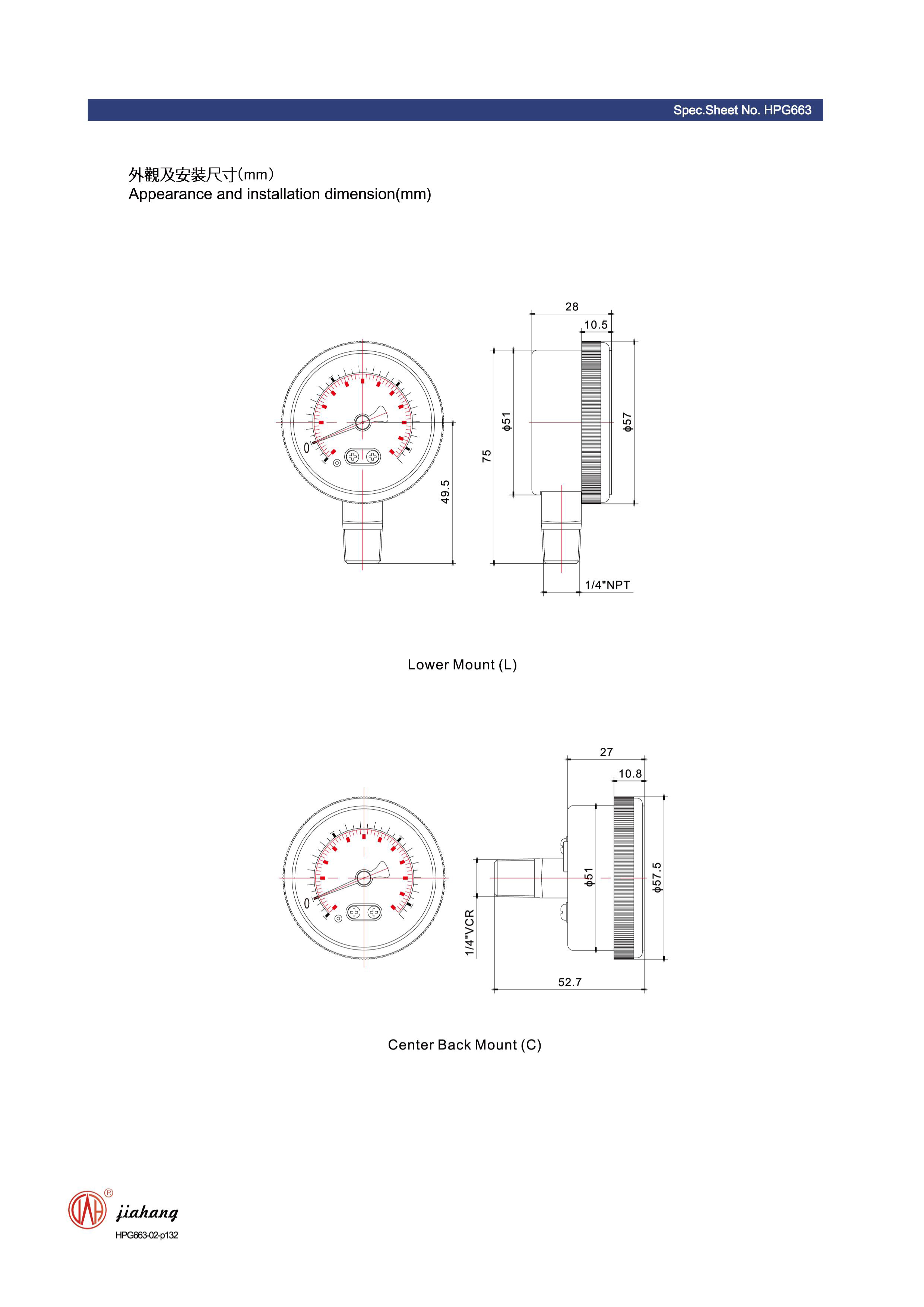
أغسطس . 08, 2024 04:15 Back to list
Calibration Techniques for Differential Pressure Gauges in Industrial Applications and Best Practices
Calibrating Differential Pressure Gauges An Essential Process for Accuracy
Differential pressure gauges are crucial instruments used in various industries, including HVAC, pharmaceuticals, and chemical processing. They measure the difference in pressure between two points in a system, allowing operators to monitor system performance, detect blockages, and ensure optimal functioning. However, the accuracy of these measurements can be compromised over time due to factors such as wear and tear, environmental changes, or simply the passage of time. Therefore, regular calibration is essential to ensure the reliability and accuracy of differential pressure gauges.
Understanding Differential Pressure Gauges
A differential pressure gauge operates by comparing two pressures. It consists of two pressure ports connected to different points in a system. The gauge displays the difference between the two pressures, which can be vital for many applications, including air filter monitoring, liquid level measurement, and flow rate calculations. Accurate readings can prevent system failures, enhance safety, and improve overall operational efficiency.
The Importance of Calibration
Calibration is the process of adjusting an instrument to ensure its measurements align with a known standard. For differential pressure gauges, this process ensures that the readings accurately reflect the actual pressure differences in the system. Several reasons underline the necessity of regular calibration
1. Accuracy Over time, the components of a differential pressure gauge may drift from their original settings. Regular calibration helps correct these discrepancies, ensuring that operators receive accurate measurements.
2. Compliance Many industries are governed by strict regulatory standards that require regular calibration of measuring instruments. Failure to comply can lead to legal issues, fines, and a damaged reputation.
3. Preventive Maintenance Regular calibration can help identify potential issues before they escalate into significant problems. By ensuring that gauges are functioning correctly, companies can avoid costly downtime.
4. Safety In critical operations, especially in industries like oil and gas or pharmaceuticals, accurate pressure readings are vital for maintaining safety standards. A malfunctioning gauge can lead to hazardous situations.
jah calibrating differential pressure gauge

The Calibration Process
Calibrating a differential pressure gauge involves several key steps
1. Preparation Begin by gathering the necessary equipment, including a calibration standard (such as a deadweight tester or a calibrated pressure source), tools for adjustment, and safety equipment.
2. Setup Connect the differential pressure gauge to the calibration standard. Ensure that all connections are secure to avoid leaks that could affect the readings.
3. Zero Adjustment Before applying pressure, check and adjust the zero reading of the gauge. This step is crucial to ensure that any readings taken afterward are accurate.
4. Applying Known Pressures Gradually apply known pressure differences to the gauge across its full range. Record the readings at various points, typically at zero, midpoint, and full-scale values.
5. Comparison and Adjustment Compare the gauge readings against the known values from the calibration standard. If discrepancies exist, adjustments can be made to bring the gauge back into alignment.
6. Documentation Finally, document the calibration process, including the results, adjustments made, and any observations. This record is essential for both compliance and future reference.
Conclusion
Calibrating differential pressure gauges is a critical aspect of maintaining accuracy and reliability in various industrial applications. By adhering to regular calibration protocols, organizations can enhance their operational efficiency, comply with regulatory requirements, and ensure safety in their processes. In today’s fast-paced industrial environment, the importance of precise measurements cannot be overstated, making calibration not just a task, but a vital commitment to quality and safety.
-
High-Precision 5 Valve Manifold Differential Pressure Gauge Suppliers
NewsApr.29,2025
-
High-Precision Diaphragm Vacuum Pressure Gauges Manufacturers & Quotes
NewsApr.29,2025
-
Omega Differential Pressure Gauges High Accuracy & Durability
NewsApr.28,2025
-
Low Pressure Differential Pressure Gauges Precision Solutions & Quotes
NewsApr.28,2025
-
Digital Diaphragm Pressure Gaauge Precision Measurement & OEM Quotes
NewsApr.28,2025
-
Differential Pressure Gauge China Price High-Accuracy & Best Quotes
NewsApr.28,2025
